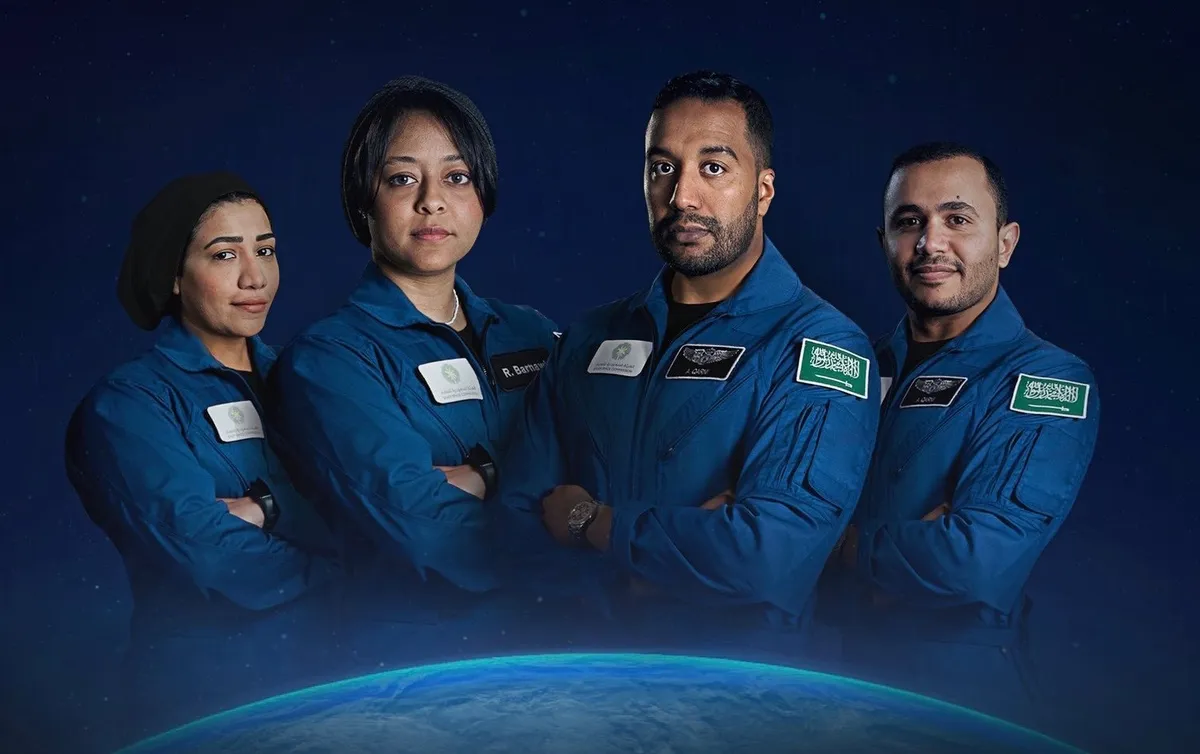Saudi astronauts selected for special Axiom mission
- February 13, 2023
- 0
The Saudi Arabian government has announced two astronauts will fly to the International Space Station this spring as part of the special Axiom Space astronaut mission. The Saudi
The Saudi Arabian government has announced two astronauts will fly to the International Space Station this spring as part of the special Axiom Space astronaut mission. The Saudi

The Saudi Arabian government has announced two astronauts will fly to the International Space Station this spring as part of the special Axiom Space astronaut mission. The Saudi Arabian Space Commission announced on February 12 that Rayana Barnawi and Ali Alkarni will take part in the Ax-2 mission to the ISS, scheduled to launch before May with the SpaceX Crew Dragon spacecraft. They will join mission commander former NASA astronaut Peggy Whitson and client John Shoffner for a 10-day mission to the station.
Barnawi and Alkarni will be the second and third Saudi nationals to go into space, after Sultan bin Salman Al Saud, who flew as a payload specialist on a space shuttle mission in 1985. Barnawi will become Saudi Arabia’s first female astronaut.
Alkarni is a 31-year-old fighter pilot in the Saudi Arabian Air Force, and Barnavi is a 33-year-old cancer researcher. The Saudi Space Commission said it would conduct 14 biomedical and physics experiments while both were on the station, but did not go into detail about their mission plans.
The Saudi Space Commission said two other astronauts, Mariam Fardous and Ali Alghamdi, will be training as proxies for the mission. All four astronauts are part of a new astronaut program announced last September by the Saudi Space Agency.
That September announcement coincided with an agreement between the Saudi Arabian government and Axiom Space to send two astronauts on a future mission. The announcement didn’t say when they would fly, but there was speculation at the time that they might be aboard the Ax-2, which had two empty seats in the four-person crew. A NASA official confirmed at a November meeting of the agency’s advisory committee that Saudi astronauts will be flying the Ax-2 and have begun training. NASA did not release their identities at the time or on January 20 in a statement announcing that ISS partners had approved all crews for the Ax-2.
“We’re working hard to meet their needs and have decided to wait a bit to announce their crew,” said Michael Suffredini, CEO of Axiom, about the undisclosed clientele for these two Ax-2 seats in January. 30 briefings for mass media. “I think certain people will be announced in the next week or two.”
The Ax-2 comes a little over a year after Ax-1, the company’s first dedicated astronaut mission, which sent four people to the ISS in what became a 17-day mission.
“The second special mission of Axiom Space astronauts to the International Space Station reinforces our mission to expand access to space worldwide and support economic growth in low Earth orbit as we build the Axiom station,” Suffredini said on Feb. About the Ax-2 crew. . “The Ax-2 brings Axiom Space one step closer to building a commercial space station in low Earth orbit and allows us to build on the legacy and achievements of the ISS by leveraging microgravity for a better life on Earth.”
Ax-2 is the second in a series of private astronaut missions that Axiom is planning to the ISS before installing a series of commercial modules on the station. These modules will serve as the core of an autonomous space station that will leave the ISS before the ISS is decommissioned around 2030.
As the Ax-1 is flown by three private citizens, along with Axiom employee and former NASA astronaut Michael Lopez-Alegria, future missions will follow Ax-2’s lead, especially flying government astronauts. Suffredini said at a briefing last month that he expects only one special person from the crew of the Ax-3 and -4.
“I am honored to return to the ISS for the fourth time and lead this talented Ax-2 team on their first mission,” Whitson said in a statement from the company. As a NASA astronaut, he has flown three long-duration missions to the ISS and holds the US record for total time in space of more than 660 days. “This is a strong and cohesive team dedicated to delivering important scientific research in space and inspiring a new generation of the benefits of microgravity.”
Source: Port Altele
As an experienced journalist and author, Mary has been reporting on the latest news and trends for over 5 years. With a passion for uncovering the stories behind the headlines, Mary has earned a reputation as a trusted voice in the world of journalism. Her writing style is insightful, engaging and thought-provoking, as she takes a deep dive into the most pressing issues of our time.